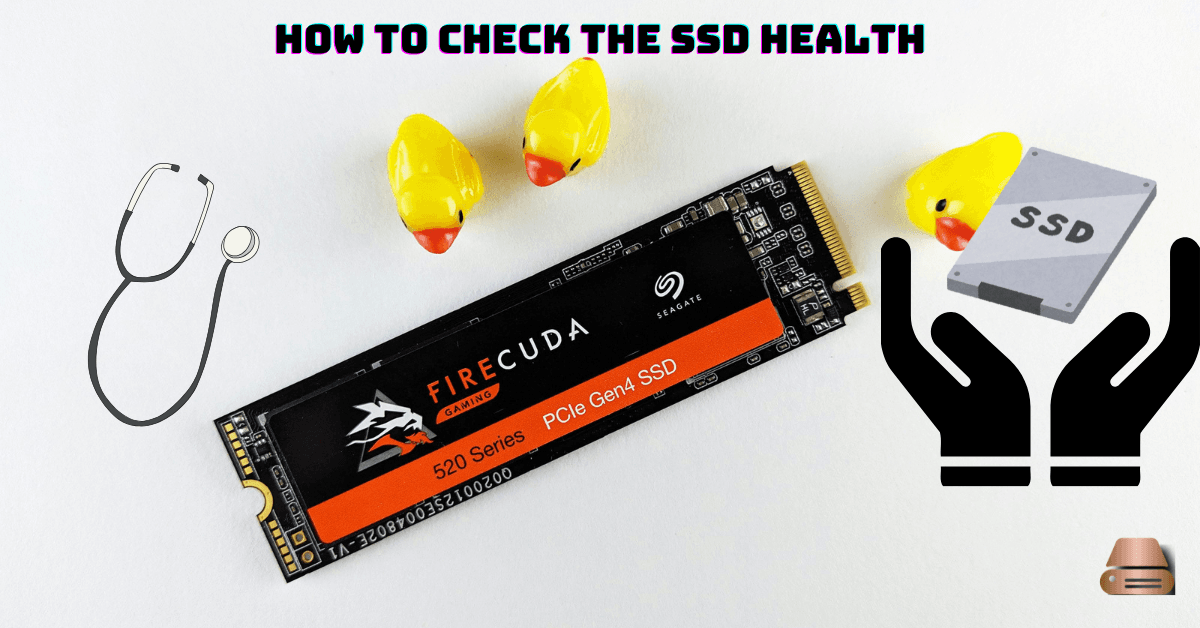Solid-state drives (SSDs) have revolutionized storage technology, offering faster performance and greater reliability than traditional Hard Disk Drives (HDDs). However, like any hardware, SSDs degrade over time, making monitoring the SSD health regularly essential. This guide explores everything you need to know about checking and maintaining SSD health, ensuring optimal performance and longevity.
Understanding SSD Technology
What is an SSD?
A Solid-State Drive is a storage device that uses flash memory to store data. Unlike HDDs, which rely on spinning disks, SSDs have no moving parts, making them faster, quieter, and more durable.
How SSDs Differ from HDDs
- Speed: SSDs can access data in microseconds, whereas HDDs take milliseconds.
- Durability: SSDs are more resistant to physical shocks.
- Power Efficiency: SSDs consume less power, making them ideal for laptops.
Benefits of Using SSDs
- Faster boot times and application loading.
- Reduced risk of mechanical failure.
- Improved multitasking capabilities.
Why Monitoring SSD Health Matters
Importance of Longevity
Monitoring SSD health helps identify wear and tear early, ensuring the drive lasts longer.
Preventing Data Loss
Early detection of issues can save valuable data from corruption or loss.
Improving System Performance
A healthy SSD ensures smooth operation and faster system performance.
Key Indicators of SSD Health
SMART Attributes Explained
Self-monitoring, Analysis, and Reporting Technology (SMART) provides metrics like read/write errors and power cycles, offering insights into SSD health.
Write and Read Speed Testing
Tools like CrystalDiskMark help measure SSD performance, indicating potential degradation.
Lifespan and Endurance Metrics
Most SSDs have a Total Bytes Written (TBW) limit, which gives an estimate of their lifespan.
How to Check SSD Health on Different Operating Systems
Checking SSD Health in Windows
- Use tools like Samsung Magician or Crucial Storage Executive.
- Open the Command Prompt and type
wmic diskdrive get status.
Checking SSD Health on macOS
- Access Disk Utility and view the SMART status.
- Use third-party tools like DriveDx for detailed analysis.
Tools for Linux Users
- Install and use the
smartctlcommand. - Tools like GSmartControl provide graphical interfaces.
Top Tools and Software for SSD Health Monitoring
Manufacturer-Specific Tools
- Samsung Magician: Tailored for Samsung SSDs.
- WD Dashboard: Designed for Western Digital drives.
Third-Party Applications
- CrystalDiskInfo: Provides comprehensive health metrics.
- Hard Disk Sentinel: Offers advanced diagnostics.
Open-Source Solutions
- Smartmontools: A robust command-line utility.
- GSmartControl: User-friendly and feature-rich.
Interpreting SSD Health Reports
Understanding Wear Levels
Wear leveling ensures data is evenly distributed, preventing premature failure.
Reading SMART Logs
Analyze parameters like reallocated sector count and uncorrectable errors.
What Do the Numbers Mean?
High write cycles or frequent errors signal potential issues.
Best Practices to Prolong SSD Lifespan
Avoiding Frequent Write Cycles
Limit unnecessary write operations, such as frequent system backups.
Enabling TRIM Command
TRIM improves performance by clearing unused data blocks.
Regular Firmware Updates
Ensure your SSD runs on the latest firmware for optimal performance.
Troubleshooting Common SSD Issues
SSD Not Recognized by System
- Check cable connections.
- Update drivers or firmware.
Sudden Performance Drops
- Run diagnostic tools to identify bottlenecks.
- Free up disk space to improve speed.
Overheating Problems
- Ensure proper ventilation.
- Use thermal pads or cooling solutions.
Conclusion
Regularly checking your SSD health is crucial for maintaining its performance and reliability. By understanding the metrics and using the right tools, you can extend your SSD’s lifespan and avoid unexpected failures. Take proactive steps to ensure your data remains safe and your system runs smoothly.
Thanks for reading about (How to check the SSD health) this blog, if you have any doubts or face any issues with your SSD please feel free to contact us.
FAQs About SSD Health
How often should I check my SSD health?
It’s advisable to check monthly or whenever you notice performance drops.
What tools are best for beginners?
CrystalDiskInfo and Samsung Magician are user-friendly options.
Can SSD health affect gaming performance?
Yes, a deteriorating SSD can cause longer load times and stuttering.
What is the average lifespan of an SSD?
Most SSDs last 5-7 years, depending on usage and quality.
